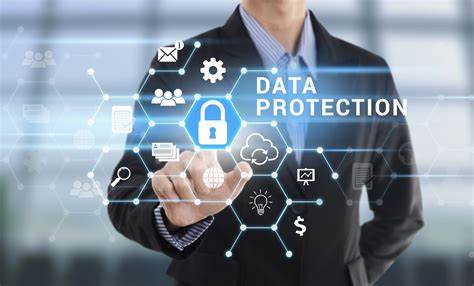In today’s digital age, data privacy and security have become increasingly important concerns as more of our personal information is collected, stored, and shared online. From social media profiles to financial transactions, our digital footprint contains a wealth of sensitive data that can be exploited if not adequately protected. In this article, we’ll explore the importance of data privacy and security and discuss strategies for safeguarding personal information:
- Understanding Data Privacy: Data privacy refers to the protection of personal information from unauthorized access, use, and disclosure. Personal data includes any information that can be used to identify an individual, such as name, address, phone number, email address, social security number, and financial information. Protecting data privacy involves ensuring that personal information is collected, processed, and stored in a secure and responsible manner, with appropriate safeguards in place to prevent unauthorized access or misuse.
- Risks of Data Breaches: Data breaches occur when sensitive information is accessed or disclosed without authorization, often resulting in identity theft, financial fraud, or reputational damage. Cybercriminals may target organizations to steal valuable data for financial gain or espionage purposes, exploiting vulnerabilities in networks, software, or human behavior. Data breaches can have serious consequences for individuals and businesses, leading to financial losses, legal liabilities, and erosion of trust.
- Legal and Regulatory Compliance: Governments around the world have enacted laws and regulations to protect individuals’ privacy rights and regulate the collection, use, and sharing of personal information. For example, the European Union’s General Data Protection Regulation (GDPR) and the California Consumer Privacy Act (CCPA) impose strict requirements on organizations regarding data protection, transparency, and accountability. Compliance with these regulations is essential for organizations to avoid hefty fines and penalties for non-compliance.
- Best Practices for Data Protection:
- Implement strong passwords and multi-factor authentication to prevent unauthorized access to accounts and devices.
- Encrypt sensitive data both in transit and at rest to protect it from interception or theft.
- Keep software and operating systems up-to-date with the latest security patches and updates to prevent vulnerabilities from being exploited.
- Use secure and reputable services for storing and transmitting personal information, such as encrypted messaging apps and secure cloud storage providers.
- Be cautious about sharing personal information online and limit the amount of information you disclose on social media and other public platforms.
- Educate employees and individuals about the importance of data privacy and security, and provide training on how to recognize and respond to potential threats and phishing attempts.
- Data Privacy Tools and Technologies: There are a variety of tools and technologies available to help individuals and organizations protect their data privacy and security:
- Virtual private networks (VPNs) encrypt internet traffic and mask IP addresses to protect online privacy and anonymity.
- Privacy-focused web browsers and search engines minimize tracking and data collection by blocking cookies, ads, and trackers.
- Password managers securely store and manage passwords, allowing users to create strong, unique passwords for each account without having to remember them all.
- Encryption tools and software provide end-to-end encryption for emails, messages, and files, ensuring that only authorized recipients can access the information.
- Promoting a Culture of Privacy and Security: Data privacy and security are not just technical issues; they require a cultural shift towards prioritizing privacy and security in all aspects of life. Organizations should establish clear policies and procedures for handling personal information, conduct regular audits and assessments to identify and mitigate risks, and foster a culture of accountability and transparency when it comes to data privacy and security.
In conclusion, data privacy and security are paramount in today’s digital world, where personal information is increasingly vulnerable to exploitation and abuse. By understanding the risks of data breaches, complying with legal and regulatory requirements, implementing best practices for data protection, leveraging privacy tools and technologies, and promoting a culture of privacy and security, individuals and organizations can safeguard personal information and mitigate the risks of unauthorized access, use, and disclosure. Ultimately, protecting data privacy and security is everyone’s responsibility, and it requires ongoing vigilance, education, and collaboration to ensure that personal information remains safe and secure in an increasingly connected world.

